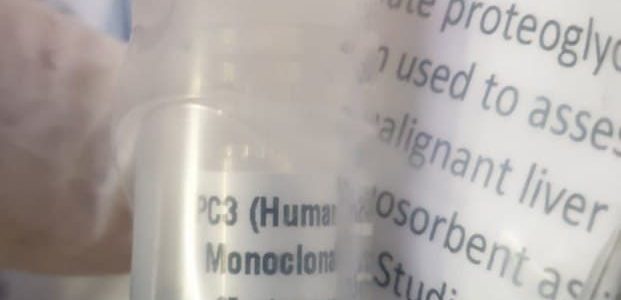<i>Pseudomonas syringae</i> pv. <i>phaseolicola</i> (P.s. phaseolicola) is one of about 45 acknowledged pathovars inside the <i>P. syringae</i> group and is the causal agent of halo-blight illness of beans. DNA from this bacterium digested to completion with two totally different restriction enzymes, <i>Pac</i>I and <i>Pme</i>I, yielded 15 and 16 fragments, respectively. These have been separated utilizing PFGE and sized by comparability to recognized <em>molecular</em> mass markers. The <i>P.s. phaseolicola</i> chromosome was decided to be roughly 5.64 Mb in dimension.
To hyperlink the totally different fragments obtained right into a round chromosome map for each enzymes, 150 random Tn<i>5</i> mutants of <i>P.s. phaseolicola</i> have been used as a supply of DNA and the identification of the band carrying the transposon ‘tag’ in every mutant was accomplished after PFGE and Southern hybridization of an entire chromosomal digestion utilizing a Tn<i>5</i> probe. Partial digestions of DNA from totally different Tn<i>5</i> mutants ‘tagging’ particular bands have been then generated and the full and partial merchandise of the digestion separated by PFGE and recognized with a Tn<i>5</i> probe.
By calculating the dimension of the partial merchandise, it was then attainable to hyperlink totally different bands right into a bodily map. This is the first report on the development of a bodily map of a member of the P. syringae group and needs to be invaluable for <em>molecular</em> <em>genetic</em> evaluation on this species and in evolutionary or taxonomic research when in comparison with comparable information obtained for any of the different acknowledged pathovars. In Caulobacter crescentus, this nanofilament, although essential for floor colonization, has by no means been completely investigated at the molecular degree.
Bacterial pili are proteinaceous motorized nanomachines that play numerous practical roles together with floor adherence, bacterial movement, and virulence. The surface-contact sensor kind IVc (or Tad) pilus is broadly distributed in each Gram-positive and Gram-negative micro organism. As Caulobacter assembles a number of floor appendages at particular phases of the cell cycle, we designed a fluorescence-based display screen to selectively research single piliated cells and mixed it with atomic pressure microscopy and genetic manipulation to quantify the nanoscale adhesion of the kind IVc pilus to hydrophobic substrates.
Deep studying approaches for pure product discovery from plant endophytic microbiomes
Plant microbiomes should not solely numerous, but in addition seem to host an enormous pool of secondary metabolites holding nice promise for bioactive pure merchandise and drug discovery. Yet, most microbes inside crops look like uncultivable, and for these that may be cultivated, their metabolic potential lies largely hidden by regulatory silencing of biosynthetic genes. The current explosion of highly effective interdisciplinary approaches, together with multi-omics strategies to handle multi-trophic interactions and synthetic intelligence-based computational approaches to deduce distribution of operate, collectively current a paradigm shift in high-throughput approaches to pure product discovery from plant-associated microbes.
Arguably, the key to characterizing and harnessing this biochemical capability is determined by a novel, systematic method to characterize the triggers that activate secondary metabolite biosynthesis by molecular or genetic indicators from the host plant, members of the wealthy ‘in planta’ group, or from the setting. This assessment explores breakthrough approaches for pure product discovery from plant microbiomes, emphasizing the promise of deep studying as a software for endophyte bioprospecting, endophyte biochemical novelty prediction, and endophyte regulatory management.
It concludes with a proposed pipeline to harness international databases (genomic, metabolomic, regulomic, and chemical) to uncover and unsilence fascinating pure merchandise. In gentle of this rising understanding, the G. tritici-wheat interplay might present a mannequin research system for root-infecting fungal pathogens of cereals.
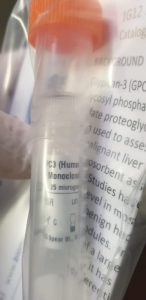
Take-All Disease: New Insights into an Important Wheat Root Pathogen
Take-all illness, attributable to the fungal root pathogen Gaeumannomyces tritici, is taken into account to be the most vital root illness of wheat worldwide. Here we assessment the advances in take-all analysis over the final 15 years, specializing in the identification of new sources of genetic resistance in wheat family members and the function of the microbiome in illness growth. We additionally spotlight current breakthroughs in the molecular interactions between G. tritici and wheat, together with genome and transcriptome analyses. These new findings will support the growth of novel management methods in opposition to take-all illness.
The growing demand for environment friendly and strong processes in the purification of monoclonal antibodies (mAbs) has not too long ago introduced frontal chromatography to the forefront. Applied throughout the sprucing step, it permits the elimination of excessive molecular weight aggregates from the goal product, reaching excessive purities. Typically, this course of is operated in batch utilizing a single column, which makes it intrinsically subjected to a purity-yield tradeoff. This implies that excessive purities can solely be achieved at the value of decreasing the product yield and vice versa.
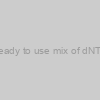 A ready to use mix of dNTPs |
|
MBT078-1ML |
EWC Diagnostics |
1 unit |
EUR 30.13 |
|
Description: A ready to use mix of dNTPs |
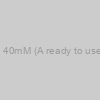 dNTP Mix, 40mM (A ready to use mix of dA |
|
MBT187-0.2ML |
EWC Diagnostics |
1 unit |
EUR 14.52 |
|
Description: dNTP Mix, 40mM (A ready to use mix of dA |
 dNTP Mix, 40mM (A ready to use mix of dA |
|
MBT187-1ML |
EWC Diagnostics |
1 unit |
EUR 43.21 |
|
Description: dNTP Mix, 40mM (A ready to use mix of dA |
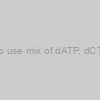 A ready to use mix of dATP, dCTP, dGTP |
|
MBT059-1ML |
EWC Diagnostics |
1 unit |
EUR 122.71 |
|
Description: A ready to use mix of dATP, dCTP, dGTP |
, 50µg) VC DNA Ladder Mix (ready-to-use), 50µg |
|
NL1419 |
Vivantis |
each |
Ask for price |
) Pfu DNA Polymerase (2X Pre-mix, ready to use) |
|
S121 |
GeneOn |
100 rcs |
EUR 109.2 |
) Pfu DNA Polymerase (2X Pre-mix, ready to use) |
|
S122 |
GeneOn |
5x100 rcs |
EUR 362.4 |
 Eco-Stain, ready to use |
|
DT81413 |
Bio Basic |
1ml |
EUR 122.64 |
|
|
, 5 x 50µg) VC DNA Ladder Mix (ready-to-use), 5 x 50µg |
|
NL1420 |
Vivantis |
each |
Ask for price |
. Adds 1.25) Additional platform separators (4 ea.). Adds 1.25" to platform separation |
|
BR2000-SP |
Benchmark Scientific |
1 PC |
EUR 54.38 |
) Cytomegalovirus Antibody (ready to use) |
|
GWB-F19DC6 |
GenWay Biotech |
6 ml |
Ask for price |
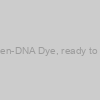 Green-DNA Dye, ready to use |
|
DT81414 |
Bio Basic |
1.5ml, 1.5ml |
EUR 153.96 |
|
|
 Stacking platform, large 12"x12" with flat mat (3.0" separation) |
|
BR1000-STACK |
Benchmark Scientific |
1 PC |
EUR 139.87 |
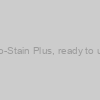 Eco-Stain Plus, ready to use |
|
DT81418 |
Bio Basic |
1ml |
EUR 164.4 |
|
|
 ) DAPI staining kit (ready to use) |
|
EGY0621 |
EnoGene |
10mL |
EUR 85 |
 ) DAPI staining kit (ready to use) |
|
EGY0622 |
EnoGene |
50mL |
EUR 185 |
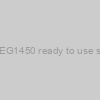 50% PEG1450 ready to use solution |
|
E28F08003 |
EnoGene |
50ml |
EUR 336.51 |
 50% PEG1450 ready to use solution |
|
E28F08003X |
EnoGene |
5×1ml |
EUR 50.79 |
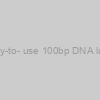 Ready-to- use 100bp DNA ladder |
|
TBS4031-0.5mL |
Tribioscience |
0.5ml |
EUR 60 |
 Stacking platform, large 12"x12" with dimpled mat (3.0" separation) |
|
BR1000-STACK-D |
Benchmark Scientific |
1 PC |
EUR 145.23 |
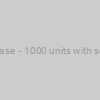 Taq DNA Polymerase - 1000 units with separate dNTP Mix |
|
3243d |
Intact Genomics |
1000units |
EUR 150 |
|
Description: Intact Genomics Taq DNA Polymerase is a thermostable DNA polymerase that possesses a 5´→3´ polymerase activity (1, 2) and a 5´ flap endonuclease activity (3, 4). This product is supplied with 10x PCR reaction buffer, containing MgCl2, which produces a final Mg2+ concentration of 1.5 mM. Ideal for primary extension reaction with DNA fragments having dA overhang on 3’ ends.Product Includes:Taq DNA Polymerase10x PCR Buffer with Mg2+5x Magic Enhancer |
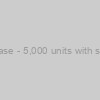 Taq DNA Polymerase - 5,000 units with separate dNTP Mix |
|
3245d |
Intact Genomics |
1/EA |
EUR 595 |
|
Description: Intact Genomics Taq DNA Polymerase is a thermostable DNA polymerase that possesses a 5´→3´ polymerase activity (1, 2) and a 5´ flap endonuclease activity (3, 4). This product is supplied with 10x PCR reaction buffer, containing MgCl2, which produces a final Mg2+ concentration of 1.5 mM. Ideal for primary extension reaction with DNA fragments having dA overhang on 3’ ends.Product Includes:Taq DNA Polymerase10x PCR Buffer with Mg2+5x Magic Enhancer10mM dNTP Mix |
) 1kbp DNA Ladder One(Ready To Use) |
|
08232-85 |
NACALAI TESQUE |
500UL |
EUR 84 |
) CBB Stain One Super(Ready To Use) |
|
11642-31 |
NACALAI TESQUE |
1L |
EUR 101.5 |
) CBB Stain One Super(Ready To Use) |
|
11642-44 |
NACALAI TESQUE |
100ML |
EUR 14 |
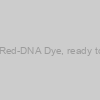 Eco-Red-DNA Dye, ready to use |
|
DT81415 |
Bio Basic |
1ml |
EUR 122.64 |
|
|
) 100bp DNA Ladder One(Ready To Use) |
|
07908-75 |
NACALAI TESQUE |
500UL |
EUR 98 |
) Bullet CBB Stain One(Ready To Use) |
|
13542-65 |
NACALAI TESQUE |
500ML |
EUR 147 |
) Bullet CBB Stain One(Ready To Use) |
|
13542-94 |
NACALAI TESQUE |
50ML |
EUR 31.5 |
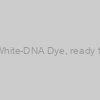 Eco-White-DNA Dye, ready to use |
|
DT81417 |
Bio Basic |
1ml |
EUR 122.64 |
|
|
) Scotts Tap Water Plus (Ready to Use) |
|
RRSP195-D |
Atom Scientific |
500ml |
EUR 4.84 |
) Scotts Tap Water Plus (Ready to Use) |
|
RRSP195-F |
Atom Scientific |
2.5L |
EUR 10.19 |
 ) Hoechst 33342 staining kit (ready to use) |
|
EGY0631 |
EnoGene |
10mL |
EUR 50 |
 ) Hoechst 33342 staining kit (ready to use) |
|
EGY0632 |
EnoGene |
50mL |
EUR 160 |
 ) Hoechst 33258 staining kit (ready to use) |
|
EGY0641 |
EnoGene |
10mL |
EUR 50 |
 ) Hoechst 33258 staining kit (ready to use) |
|
EGY0642 |
EnoGene |
50mL |
EUR 145 |
 Ready? PCR Mix |
|
M1127-1000 |
Biovision |
each |
EUR 614.4 |
 Ready? PCR Mix |
|
M1127-200 |
Biovision |
each |
EUR 229.2 |
) Protein Assay CBB Solution(Ready To Use) |
|
11617-71 |
NACALAI TESQUE |
1L |
EUR 94.5 |
) Cytokeratin 8 + 18 Antibody (ready to use) |
|
GWB-52C6CD |
GenWay Biotech |
6 ml |
Ask for price |
|
|
 Scotts Tap water substitute Ready to use |
|
RRSP192-D |
Atom Scientific |
500ml |
EUR 4.84 |
 Scotts Tap water substitute Ready to use |
|
RRSP192-E |
Atom Scientific |
1L |
EUR 6.77 |
 Scotts Tap water substitute Ready to use |
|
RRSP192-F |
Atom Scientific |
2.5L |
EUR 10.19 |
 Scotts Tap water substitute Ready to use |
|
RRSP192-G |
Atom Scientific |
5L |
EUR 17.09 |
 ) Propidium iodide staining kit (ready to use) |
|
EGY0651 |
EnoGene |
5mL |
EUR 90 |
 ) Propidium iodide staining kit (ready to use) |
|
EGY0652 |
EnoGene |
10mL |
EUR 125 |
 ) Propidium iodide staining kit (ready to use) |
|
EGY0653 |
EnoGene |
20mL |
EUR 240 |
, Ready to use) rat IgG SABC Kit (AP), Ready to use |
|
LF-SAB5021 |
Abfrontier |
1kit |
EUR 363.6 |
|
Description: Alkaline Phosphatase Conjugated anti-Rat IgG SABC Kit |
, Ready to use) rat IgG SABC Kit (HRP), Ready to use |
|
LF-SAB5012 |
Abfrontier |
1kit |
EUR 315.6 |
|
Description: HRP Conjugated anti-Rat IgG SABC Kit |
, Ready to use) goat IgG SABC Kit (AP), Ready to use |
|
LF-SAB5019 |
Abfrontier |
1kit |
EUR 363.6 |
|
Description: Alkaline Phosphatase Conjugated anti-Goat IgG SABC Kit |
, Ready to use) goat IgG SABC Kit (HRP), Ready to use |
|
LF-SAB5010 |
Abfrontier |
1kit |
EUR 315.6 |
|
Description: Peroxidase Conjugated SABC Kit (goat IgG) (Ready to use) |
, Ready to use) mouse IgG SABC Kit (AP), Ready to use |
|
LF-SAB5017 |
Abfrontier |
1kit |
EUR 363.6 |
|
Description: Alkaline Phosphatase Conjugated anti-Mouse IgG SABC Kit |
, Ready to use) human IgG SABC Kit (AP), Ready to use |
|
LF-SAB5020 |
Abfrontier |
1kit |
EUR 363.6 |
|
Description: Alkaline Phosphatase Conjugated anti-Human IgG SABC Kit |
, Ready to use) mouse IgM SABC Kit(AP), Ready to use |
|
LF-SAB5022 |
Abfrontier |
1kit |
EUR 388.8 |
|
Description: Alkaline Phosphatase Conjugated anti-Mouse IgM SABC Kit |
, Ready to use) mouse IgG SABC Kit (HRP), Ready to use |
|
LF-SAB5008 |
Abfrontier |
1kit |
EUR 315.6 |
|
Description: HRP Conjugated anti-Mouse IgG SABC Kit |
, Ready to use) human IgG SABC Kit (HRP), Ready to use |
|
LF-SAB5011 |
Abfrontier |
1kit |
EUR 315.6 |
|
Description: HRP Conjugated anti-Human IgG SABC Kit |
, Ready to use) mouse IgM SABC Kit (HRP), Ready to use |
|
LF-SAB5013 |
Abfrontier |
1kit |
EUR 363.6 |
|
Description: HRP Conjugated anti-Mouse IgM SABC Kit |
, Ready to use) mouse IgG SABC Kit (HRP), Ready to use |
|
LF-SAB5014 |
Abfrontier |
1kit |
EUR 363.6 |
|
Description: Peroxidase Conjugated SABC Kit (mouse IgG) (Ready to use) |
, Ready to use) rabbit IgG SABC Kit (AP), Ready to use |
|
LF-SAB5018 |
Abfrontier |
1kit |
EUR 363.6 |
|
Description: Alkaline Phosphatase Conjugated anti-Rabbit IgG SABC Kit |
, Ready to use) rabbit IgG SABC Kit (HRP), Ready to use |
|
LF-SAB5009 |
Abfrontier |
1kit |
EUR 315.6 |
|
Description: HRP Conjugated anti-Rabbit IgG SABC Kit |
, Ready to use) rabbit IgG SABC Kit (HRP), Ready to use |
|
LF-SAB5015 |
Abfrontier |
1kit |
EUR 363.6 |
|
Description: HRP Conjugated anti-Rabbit IgG SABC Kit |
(Ready To Use)) DNA Ladder One(Broad Range)(Ready To Use) |
|
08362-85 |
NACALAI TESQUE |
500UL |
EUR 105 |
) MHC Class I RT1Aa Antibody (ready to use) |
|
GWB-565340 |
GenWay Biotech |
5 ml |
Ask for price |
|
|
) Maximo Taq DNA Polymerase (2X pre-mix, ready-to-use) |
|
S113 |
GeneOn |
2x100 rcs |
EUR 79.2 |
) Maximo Taq DNA Polymerase (2X pre-mix, ready-to-use) |
|
S114 |
GeneOn |
10x100 rcs |
EUR 231.6 |
 IMISX - Ready To Use Assembled Plates, 20 plates |
|
M-IMISX-RTU-01 |
MiTeGen |
20 PLATES |
EUR 850 |
|
Description: IMISX - Ready To Use Assembled Plates, 20 plates |
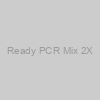 Ready PCR Mix 2X |
|
11170052-1 |
Glycomatrix |
1 Unit(s) |
EUR 46.41 |
 Ready PCR Mix 2X |
|
11170052-2 |
Glycomatrix |
2 Unit(s) |
EUR 84.38 |
 (ready to use)) Pan Cytokeratin Antibody (5D3 & LP34) (ready to use) |
|
GWB-1F0219 |
GenWay Biotech |
6 ml |
Ask for price |
|
|
 Protein Blocking Solution, ready to use for IHC |
|
IHR-8121-15 |
ImmunoBioscience |
15 ml |
EUR 47.75 |
 Protein Blocking Solution, ready to use for IHC |
|
IHR-8121-50 |
ImmunoBioscience |
50 ml |
EUR 72.25 |
 Magnetic Separation Rack |
|
CM101 |
Vazyme |
32 well (200 μl/well) |
EUR 140 |
 Magnetic Separation Rack |
|
CM103 |
Vazyme |
24 well (1.5 ml/well) |
EUR 140 |
 HotTaq Power Mix Ready-to-Load 12.5 mM |
|
BT10801 |
Bioatlas |
250rxn |
EUR 147.6 |
|
Description: High quality HotTaq polymerase for different PCR variations and downstream applications. |
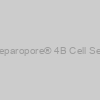 Mannose Separopore® 4B Cell Separation Kit |
|
20840070-1 |
Glycomatrix |
1 Kit |
EUR 166.28 |
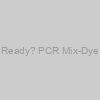 Ready? PCR Mix-Dye |
|
M1128-1000 |
Biovision |
each |
EUR 614.4 |
 Ready? PCR Mix-Dye |
|
M1128-200 |
Biovision |
each |
EUR 229.2 |
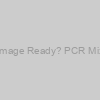 Image Ready? PCR Mix |
|
M1129-200 |
Biovision |
each |
EUR 352.8 |
) Hepatitis B Surface Antigen Antibody (ready to use) |
|
GWB-95C198 |
GenWay Biotech |
6 ml |
Ask for price |
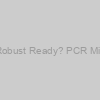 Robust Ready? PCR Mix |
|
M1130-1000 |
Biovision |
each |
EUR 738 |
 Robust Ready? PCR Mix |
|
M1130-200 |
Biovision |
each |
EUR 255.6 |
, Ready to use) mouse/rabbit IgG SABC Kit (AP), Ready to use |
|
LF-SAB5016 |
Abfrontier |
1kit |
EUR 375.6 |
|
Description: Alkaline Phosphatase Conjugated anti-Mouse/Rabbit IgG SABC Kit |
 (ready to use)) EBV Antibody (CS1, CS2, CS3, CS4) (ready to use) |
|
GWB-C13791 |
GenWay Biotech |
6 ml |
Ask for price |
) RB Antibody (ready-to-use) |
|
GWB-1EDEC4 |
GenWay Biotech |
6 ml |
Ask for price |
|
|
) RB Antibody (ready-to-use) |
|
GWB-A6052C |
GenWay Biotech |
7 ml |
Ask for price |
) CG Antibody (ready-to-use) |
|
GWB-82BBD7 |
GenWay Biotech |
6 ml |
Ask for price |
) LH Antibody (ready-to-use) |
|
GWB-F48A7C |
GenWay Biotech |
5 ml |
Ask for price |
, Ready to use) mouse/rabbit IgG SABC Kit (HRP), Ready to use |
|
LF-SAB5007 |
Abfrontier |
1kit |
EUR 339.6 |
|
Description: HRP Conjugated anti-Mouse/Rabbit IgG SABC Kit |
) NOS Antibody (ready-to-use) |
|
GWB-2D9818 |
GenWay Biotech |
7 ml |
Ask for price |
|
|
) IgM Antibody (ready-to-use) |
|
GWB-2FC043 |
GenWay Biotech |
6 ml |
Ask for price |
|
|
) NSE Antibody (ready-to-use) |
|
GWB-3A51EE |
GenWay Biotech |
7 ml |
Ask for price |
|
|
) IgG Antibody (ready-to-use) |
|
GWB-41E7B8 |
GenWay Biotech |
6 ml |
Ask for price |
|
|
) Syk Antibody (ready-to-use) |
|
GWB-45AFD6 |
GenWay Biotech |
7 ml |
Ask for price |
|
|
) PTH Antibody (ready-to-use) |
|
GWB-AF2CC0 |
GenWay Biotech |
6 ml |
Ask for price |
) NSE Antibody (ready-to-use) |
|
GWB-319151 |
GenWay Biotech |
6 ml |
Ask for price |
|
|
) p53 Antibody (ready-to-use) |
|
GWB-621510 |
GenWay Biotech |
6 ml |
Ask for price |
) VWF Antibody (ready-to-use) |
|
GWB-DE8A2E |
GenWay Biotech |
6 ml |
Ask for price |
) CD3 Antibody (ready-to-use) |
|
GWB-F4D69E |
GenWay Biotech |
6 ml |
Ask for price |
) APC Antibody (ready-to-use) |
|
GWB-C92263 |
GenWay Biotech |
7 ml |
Ask for price |
) CEA Antibody (ready-to-use) |
|
GWB-CB55CA |
GenWay Biotech |
6 ml |
Ask for price |
) IgA Antibody (ready-to-use) |
|
GWB-D067D8 |
GenWay Biotech |
6 ml |
Ask for price |
) p53 Antibody (ready-to-use) |
|
GWB-C45BD9 |
GenWay Biotech |
6 ml |
Ask for price |
) Bim Antibody (ready-to-use) |
|
GWB-C57FAD |
GenWay Biotech |
7 ml |
Ask for price |
Recently, a two-column steady implementation of frontal chromatography, known as Flow2, was developed (Vogg et al., J. Chrom. A, 1619, 460943, 2020). Despite having the ability of assuaging the purity-yield tradeoff typical of batch operations, the enhance in the quantity of course of parameters complicates its optimum design, with the threat of not exploiting its full potential. In this work, we developed an advert hoc design process appropriate for the optimization of each batch frontal chromatography and Flow2 in phrases of purity, yield and productiveness. This process supplied comparable outcomes as a multi-objective optimization primarily based on genetic algorithm however with decrease computational effort.


